






































Digital detox is all about reducing the amount of time we all spend on our devices, our screens and our gadgets. Technology has become a prominent aspect of most people’s lives, and the fact is, it’s changed lives for the better. That being said, relying and using it in excess like we do now, has birthed numerous issues. Those issues are physical (back problems, eye and wrist strain etc.) as well as mental (possible digital addiction, anxiety, FOMO). The list of consequences that come as a by-product from the amount of time we spend on our devices today is a long one. In this manual we decided to focus on reliance, control, and desire. We discovered that people are indeed aware that digital usage is at an unhealthy high. However, people lacked either the desire to do anything about it or the control over their impulses. Our list of key user needs and insights allowed us to decide on the path for our solution. This solution was what we liked to call “a distraction from the distraction”. It is a tangible set of cards, designed to be trendy, in their extremely portable case. To support this product is a number of elements, namely the launching event, quarterly events and campaigns, vital partnerships and pop ups. Take Me Off then takes shape even further during the quick wins and experiments stage, where we realized some changes had to be made to the shape of the case as well as the way we initially wanted to keep a reward point-system. This allowed us to have completed all four stages of the Double Diamond (a model with a process to help reach one rich solution). With that, we refined prototypes done at an earlier stage to really capture our audience and have them engage with our idea.
Our problem statement centers on the importance of digital detox and the problematic notion of people being unable to successfully do so. Digital detox is necessary to implement because of the benefits that it provides, which will be discussed further in the manual. Maintaining a balanced lifestyle is crucial as overuse of gadgets can lead to issues that we will raise in the sections below.
“How might we enable people to be less connected in today’s digital age?”
The Double Diamond model is a rather simple method of arriving at a refined solution. It centers on beginning with a broad concept, then narrowing it down to a central problem. This completes the first ‘diamond’. Secondly, vague solutions are generated in broad terms before they are complexified and reiterated to form more concise solutions to our problem, which can then be redefined again. By polishing the final solution or solutions, we complete the second ‘diamond’ and thus the model.
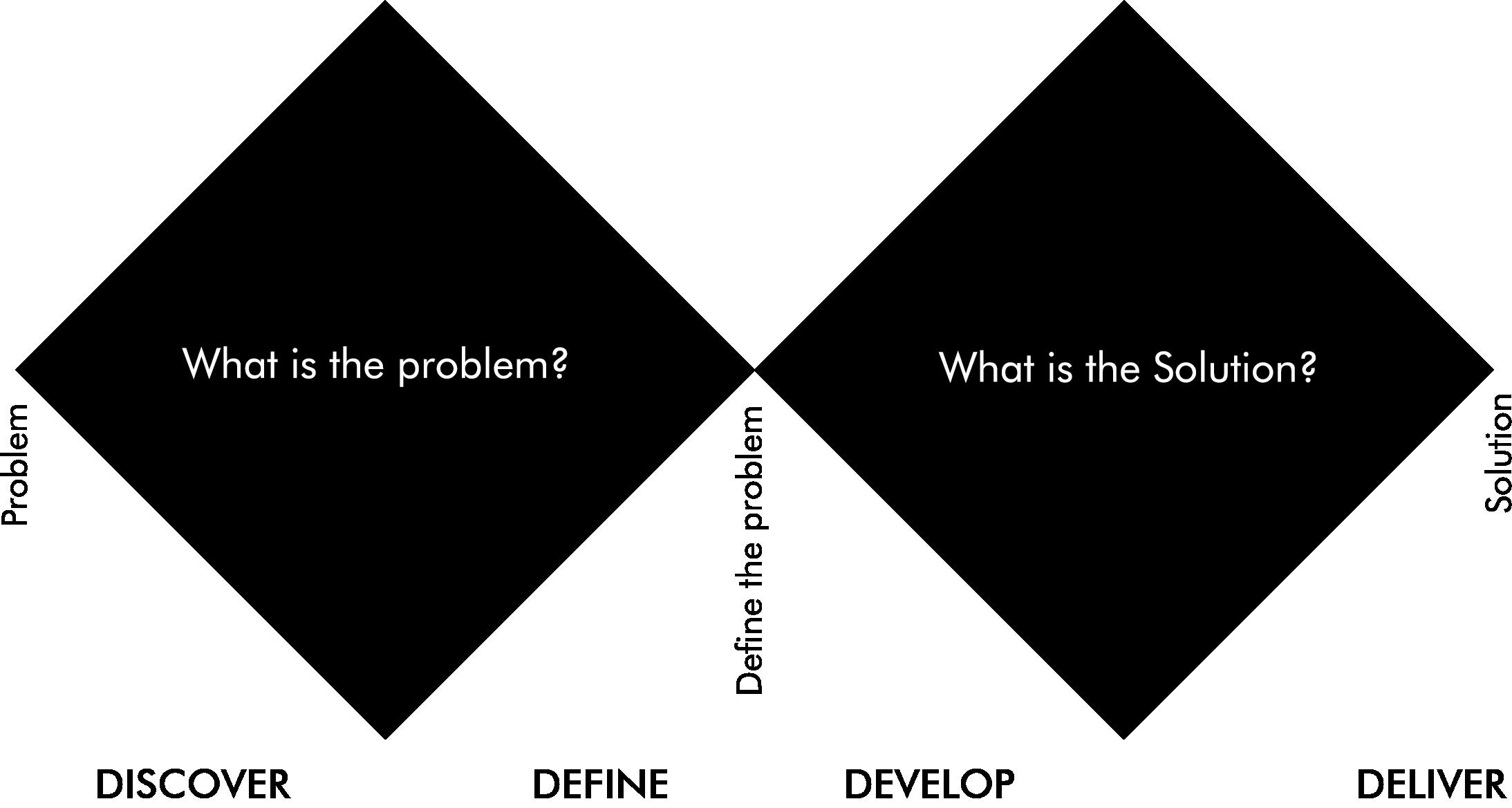
Having used the Double Diamond Design Process, each of the four stages presented its own set of challenges and surprises. Firstly, for the Discover stage, we extensively researched digital detox and its importance. This led us down the path of wondering how often people truly interacted with digital devices, and why. In this stage we conducted our 13 interviews, and found strikingly similar answers across the board that gave us tens of insights. Among those insights were that awareness of excess digital use was not an issue – people seemed to be quite aware of the issue, therefore raising awareness was not vital. This stage birthed an influx of information that we had to later combine and narrow down to what is most important to us. After eliminating insights and narrowing them down to the most critical, we began to focus our efforts around two in particular – the fact that people used digital devices to distract themselves a lot of the time, and the fact that many people do wish to use them less but lack the control and desire to do so. Therefore, we decided to focus on desire and control, using those two keywords and putting them at the heart of the ‘why’ of our service. We were also able to narrow down our key user needs to 5 concise ones, the most prominent of them being that “people need a distraction from the distraction”. Having defined and then redefined our problem statement in this stage, we now knew what aspect of the problem we wanted to focus on. By doing so, we identified a clear direction for ourselves to follow. This direction was later what enabled us to come up with a solution according to its structure.
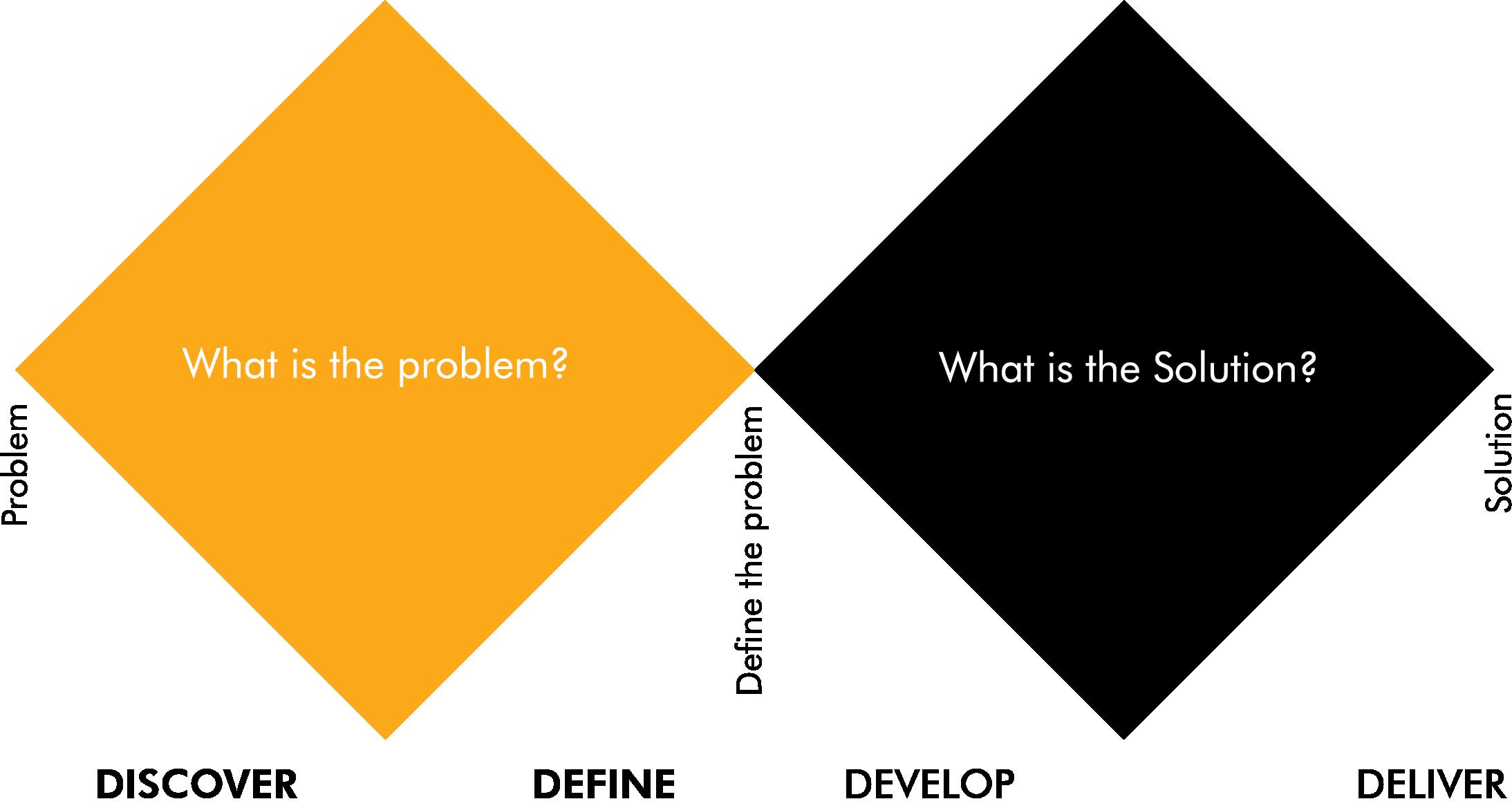
After grouping our interviews into different segments, we created 2 personas that captures people with similar behavior patterns. The purpose of persona is to humanize the service to cater it to the needs of the people, thereby, putting the user needs in the center. The personas talk about the goals and needs of the user as well as their pain points and frustration. It has sections that helps understand the personality of the individual as well. Since our topic heavily relies on use of technology, there is a part that focuses on the usage of different digital devices, software and different applications.
1. Making friends through online gaming and platforms and building on virtual friendships.
The world has never been as connected as it is today. With the increase of technological advances at the speed that they are happening, the way we do things has changed significantly. For one, many habits are widely accepted now than ever before regarding building friendships with strangers. With so many different platforms, games, forums, websites etc., people can find other from all around the world with similar minds or interests. This has created an acceptance and belief that real friendships could arise over the internet, and have reason to be maintained. Relationships of this nature have multiple benefits as people who could have never realistically met could foster a connection. However, it has also enabled a myriad of concerns to arise as well.
2. People will find more time for themselves through digital detoxing.
We discovered that one of our responses during conducting interviews suggested having time to relax and withdraw from the digital world. It helps the person find more space for important issues and thus avoid sticking to the digital environment. Time is a key element in keeping track of the daily chores such as eating breakfast which is an important task to keep the person healthy and awake.
3. Nothing can beat or take over the experience of human interaction. This can help us understand why there is a connection between loneliness and technology.
Human beings are herd animals, and prove to be social animals more specifically. Although this varies in levels from person to person, isolation is usually detrimental to a person’s growth. Hence, no matter how advanced and connected technology allows us to be, it has not fully replaced and replicated the impact and importance of human interaction. Therefore, it comes as no surprise that even with increased connection across the globe, putting effort on digital platforms over physical interactions has made people find online interactions lacking.
4. People are extremely aware of digital addiction, and even with the help of apps and control methods, have not yet managed to control their usage.
Hardly anyone would deny that in this day and age, people are using technology – and social media specifically – excessively. People’s news, schedules, interviews, journals and friends can now all be grouped and accessed on various screens with ease. This makes it incredibly easy and time-efficient to simply rely on devices to manage the various aspects of one’s life. Ease of information or taking actions is also another result of the digital era. Surprisingly, this issue is not one that needs attention drawn to it – people are quite aware and self-aware of the magnitude of the problem. Hence, raising awareness is not the issue. The issue is in fact bridging the gap between people’s awareness and providing the tools to drive control.
5. There is an overload of information on the internet, which makes people desensitized. People are more anxious about losing an inanimate object these days (Phone separation anxiety known as nomophobia).
People are exposed to lot of information on the internet every day, especially regarding things happening around us in our surroundings. The occurrences of such situations have increased so much that it does not affect people anymore and they have stopped empathizing with it. What affects people more these days is the thought of leaving their phone behind somewhere. Just the thought of losing their mobile phone is one of the biggest nightmares. Attachment with inanimate objects has taken over the empathy towards real-life situations.
6. There has been a great rise in FOMO which adds to anxiety and consistent online use.
FOMO which stands for “Fear Of Missing Out” is very common among the people we interviewed. FOMO occurs when someone misses out a lot due to the exclusion of others or keeping track of what others are doing or engaging online. Feeling left out is paired with FOMO and therefore, this causes the person to experience anxiety and stress.
7. Going over their phone is the first thing most people do in the morning right after they wake up. The longest people are disconnected is the time they are asleep.
Many people have said that the very first thing they check when they wake up are their phones. The reason why people tend to use their phones firstly is because they have been away from using their digital devices for many hours and it’s the time where they are off to bed. People are asleep an average of 8 hours a night and that is the longest duration people are voluntarily away from their digital devices. Thus, the minute they wake up is the time where they need to recharge and get back on their digital devices such as their phones.
8. Distraction can help reduce the use of digital devices.
Distraction is a great tool for keeping the person to be more focused on other things that does not involve digital devices. Engaging in something physical or tangible keeps the person distracted from subconsciously using digital devices. It is very important to develop hobbies such as outdoor activities that can help the person from ceasing the use of digital devices. Sports, reading are great in helping the person be immersed outside the digital world and thus providing incremental benefits.
1. The general population need control over the amount of technology present and used in their daily lives.
With the increase in the amount of technology used in everyday life, the general populace now realizes that there is a need to control and limit the amount of face time they have with their screens. The most prominent need is the reduction and control over the amount of technology being used.
2. There is a need for a distraction from the distraction.
It started as a distraction from everyday life. A change from the same activities that were being performed day in and day out. However, the distraction turned into an addiction and now, requires a distraction itself. People are looking to engage in activities that help them escape their addiction to technology. They require a distraction from their distraction.
3. There is a need for the users to focus on the advantages of technology, through which they also gain time.
There are a lot of advantages of using technology in our day to day lives. However, a digital detox is required due to the negative effects of the excessive use of technology posses. This indicates that the focus needs to be taken back to the positives of technological use. When technology is used to help the wellbeing and richness of the life of an individual, not only does the mental health of the individual improve, but they also tend to gain time in the day to accomplish other important tasks.
4. Despite the technological advances, there is a need for human interaction by the user.
The human individual desires human connection. It is our nature to want to talk about our difficulties and successes to someone who listens. In situations like this one, most of the population prefers human interaction. Individuals want technological advancements implemented as long as some key touchpoints are still human beings. People crave human interaction in their day to day lives.
People are have grown addicted to using technology for various reasons. For one, it has made people’s lives better and easier. On the other hand, use has gone up to extents that are arguably unhealthy and even toxic. Our ‘Aha’ moment came about from the realization that people simply lack either the desire or the control to manage their addiction, even though many want to. We chose to go about using our ‘Aha’ moment by placing it at the center of Simon Sinek’s Golden Circle Model. This model asks three vital questions in a particular order: WHY, HOW, WHAT. Moving forward, exploring why people have an issue with control and desire would enable the service design solution to be articulated and curated to that very problem.
I. Everyone checks their phones first thing in the morning – Sleep is the only thing that disconnects the two.
II. People aren’t aware of how much they are desensitized until they reflect on it – nothing makes an impact anymore.
Everyone knows that they use technology and digital devices excessively, but they have little control or desire to stop – Why? Why not? What could change that?
We changed our initial problem statement to a newly defined one which is, “How might we help people to gain control over the excessive use and reliance on technology?”. We thought of redefining the problem statement into being more precise such as controlling. Control and desire are our main theme for this project since this is going to be our starting point for tackling the issue of the excessive use of technology. What triggers people to stop their addiction to digital things? This is the central focus for our new problem statement to figure out ways tackling this issue.
“How might we help people to gain control over the excessive use and reliance on technology?”
With the redefined problem statement in mind – “How might we enable people to gain control over the excessive use and reliance on technology?” – a series of possible solutions came to mind. As mentioned earlier, we used a brainstorming method that allowed our possible solutions to span in so many different directions. The end result was that of a complex and layered service and product, the “Take Me Off”, which included a variety of elements to truly and holistically combat excess reliance on technology. We also decided, that our brand does not paint technology out to be a negative or ‘evil’ thing. We did not wish to eliminate it from people’s lives completely and acknowledged the enormous ease and benefits it brought to everyone’s lives. As a result, we wanted people to simply use technology less, not stop altogether. Knowing that our target audience, young adults, followed trends, we knew that we’d actually have to use social media and digital platforms to truly get the word out about our service and give it a chance to succeed. Thus, we reveled in the fact that we would encourage digital detox through the digital platforms themselves – a notion that seems contradictory, but in this day and age, is actually the most powerful method of doing so. We also decided that quarterly events, plus our launching event, would ensure that people continue to engage and hear of our service and product, with the continual help of influencers at the forefront. Conducting a hypothetical run of service from beginning to end allowed us to realize one huge problem with our proposed solution, namely that we can keep track of people’s reward points on our system. When realizing we had no concrete way of ensuring that people actually did the challenges before inputting the serial number on the cards, we decided to make the reward system depend more on our capable employees and volunteers. We wanted an additional, monthly pop-up, where people went through the .three levels of challenges in front of our employees and each other, in order to collect their reward
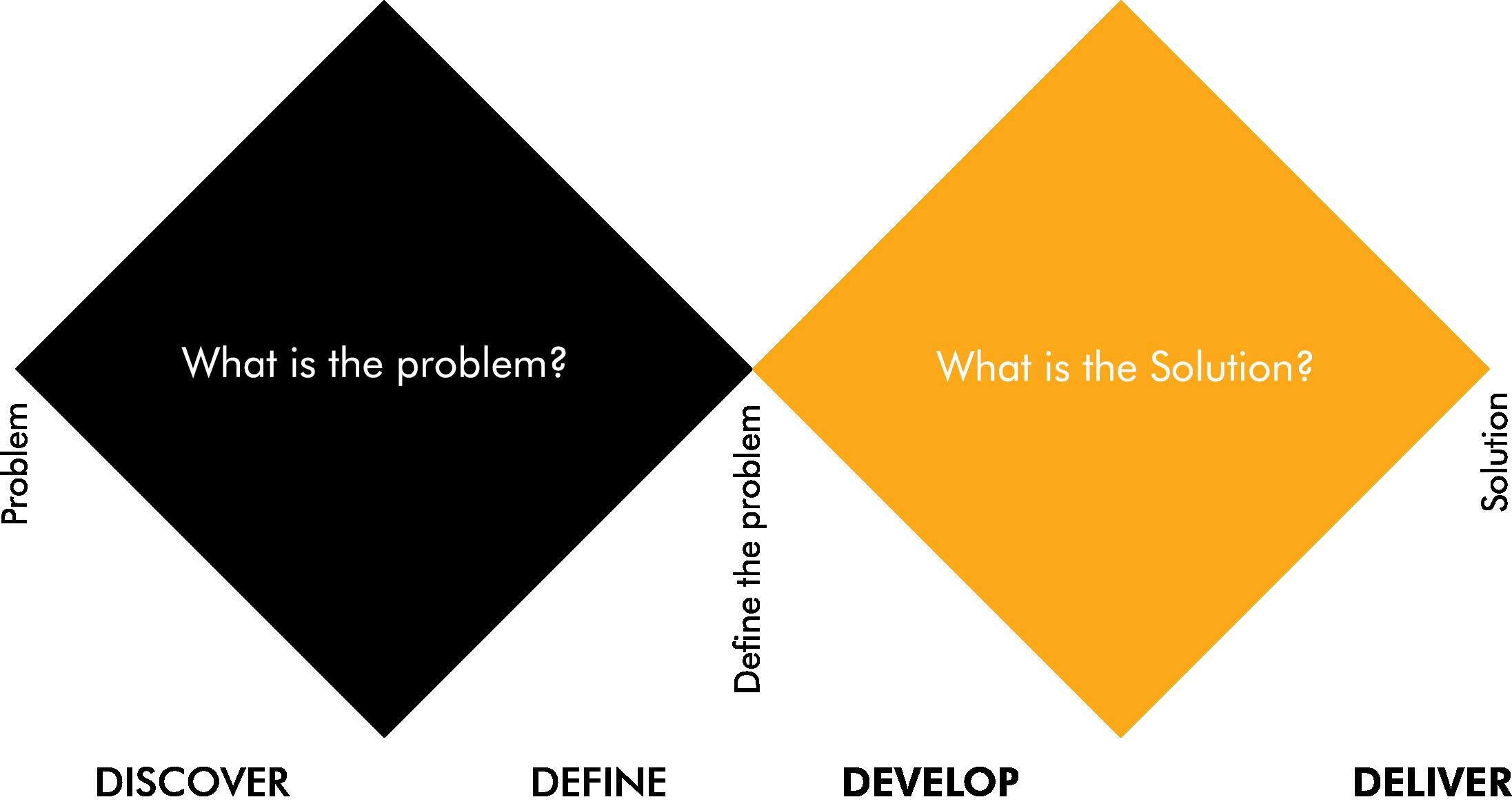
Before we could arrive at one specific direction in which our solution would be heading, our team brainstormed using all the research we’ve already conducted. Initially, thoughts and ideas were thrown out in big numbers, with no specific solution in mind. After pursuing the 1-2-All method of brainstorming (brainstorming alone, followed by brainstorming in pairs, followed by brainstorming as a group and integrating the ideas), we faced the challenge of narrowing it all down. The most interesting aspect was coupling similar ideas together, finding that some of them actually complimented one another and added more value to one another. As a result of making several ideas join forces, we had a total of 6 complex ideas, different from one another. Those ideas spanned from physical health-related products and services to exclusive clubs where membership required digital detox. Choosing from our last four ideas was the most difficult part. Eventually, we arrived at an idea for a physical and tangible product, one that is interactive but also has some of its roots embedded in technology and digital platforms, as our project does not aim to completely veer people away from digital use.
Named “Take Me Off”, this product ultimately asks its participants to be distracted from their digital activities for a given time using a challenge. The name “Take Me Off” is a play on words from the statement “Take Me On” as well as the literal meaning of ‘take me offline’ or ‘off digital use’. The name would later be used in hashtags and in campaigns to support it.
The default logo is in a simple black and white, the words jumping out like a command. However, since the Take Me Off cases come in three colors, the logo would change accordingly. This is so that the text is always most prominent regardless of the color of the case.
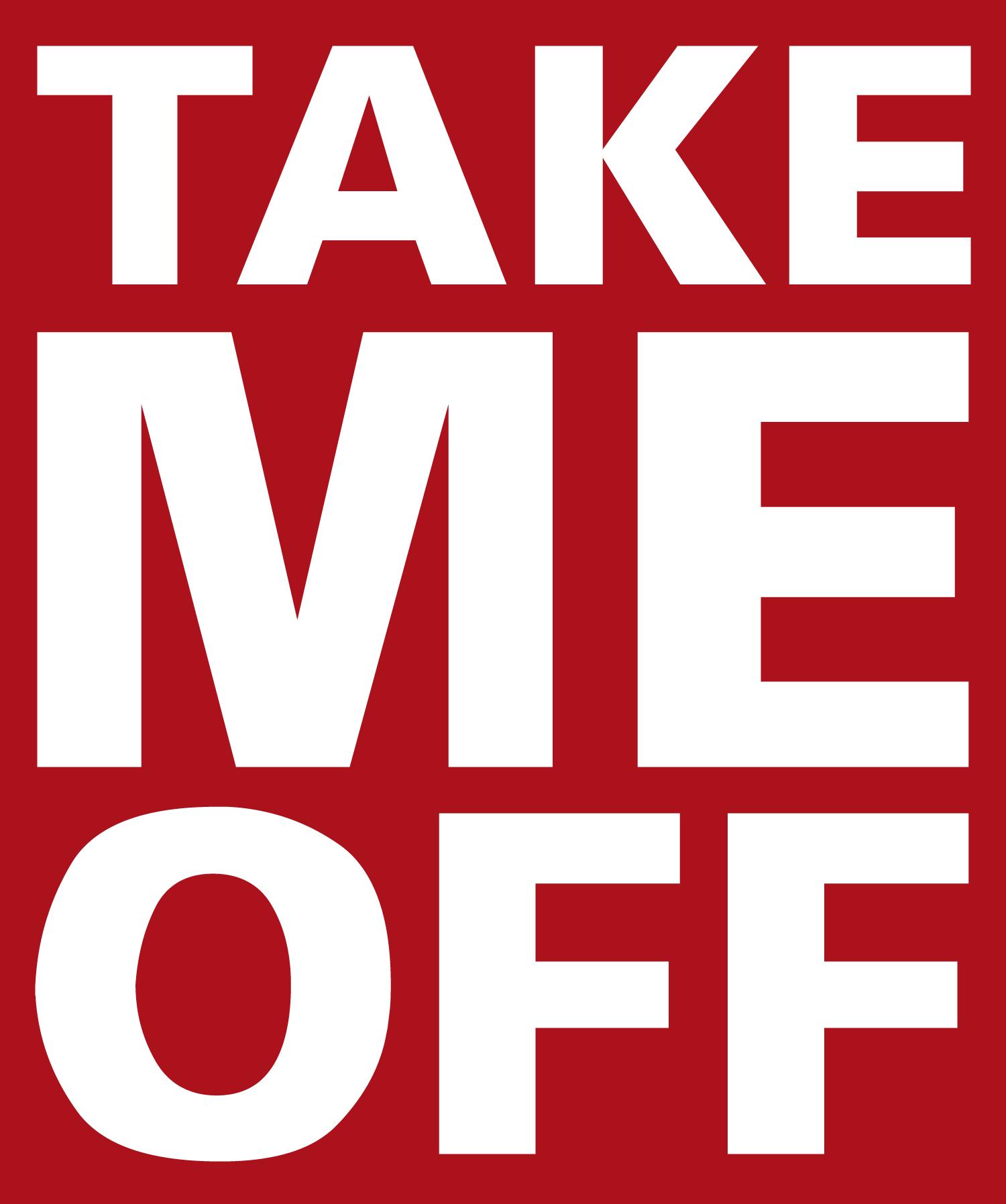

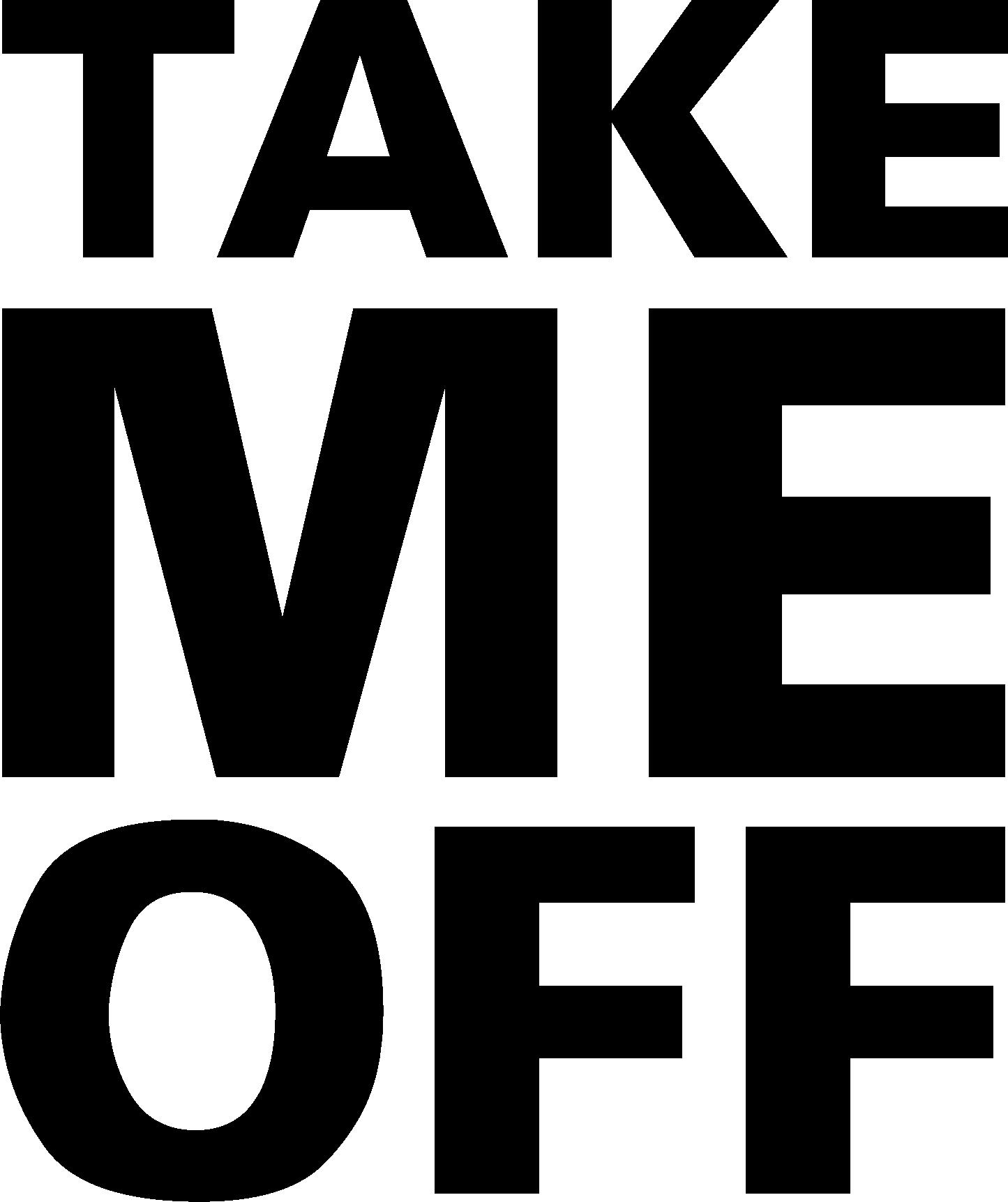
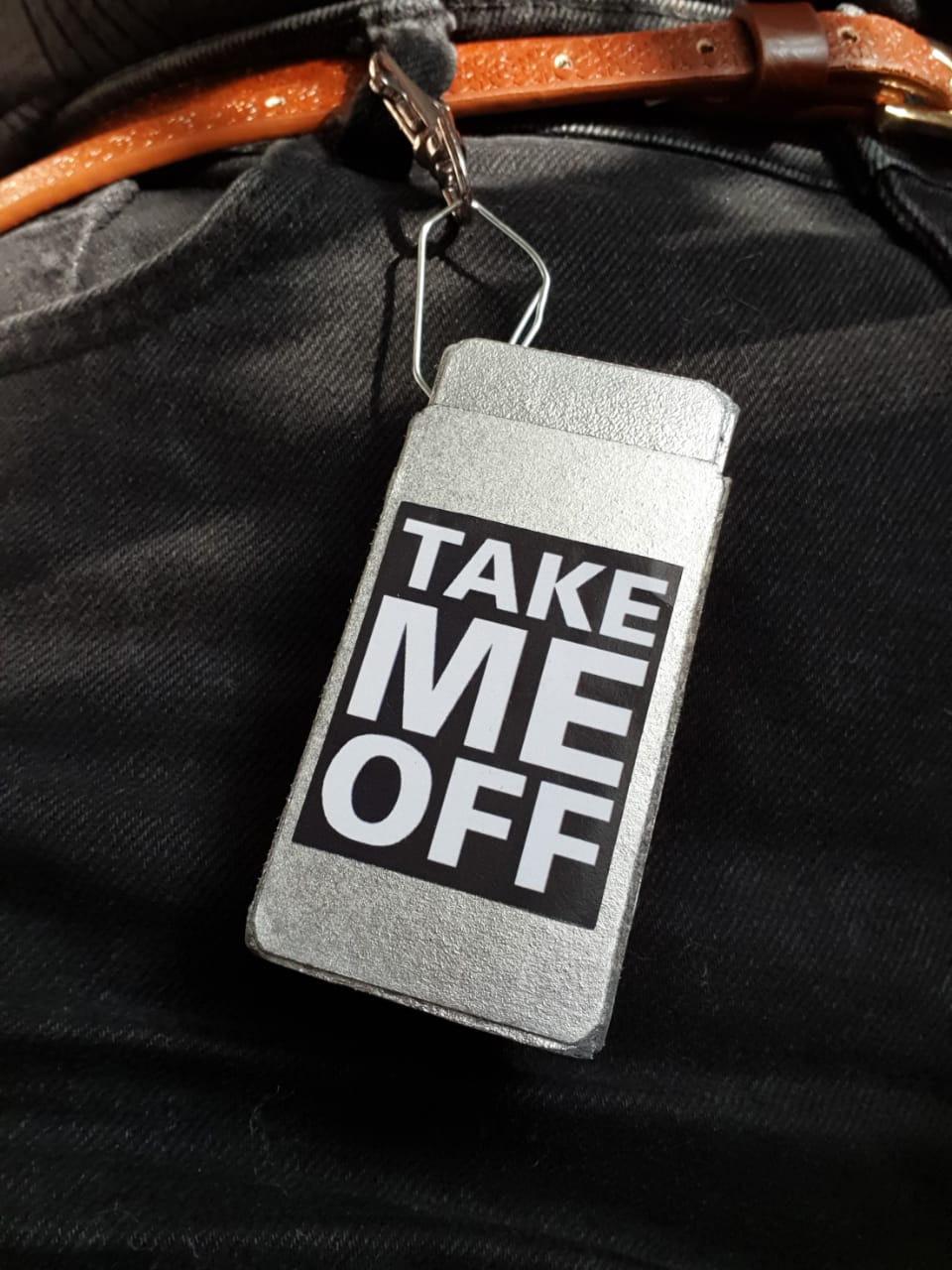
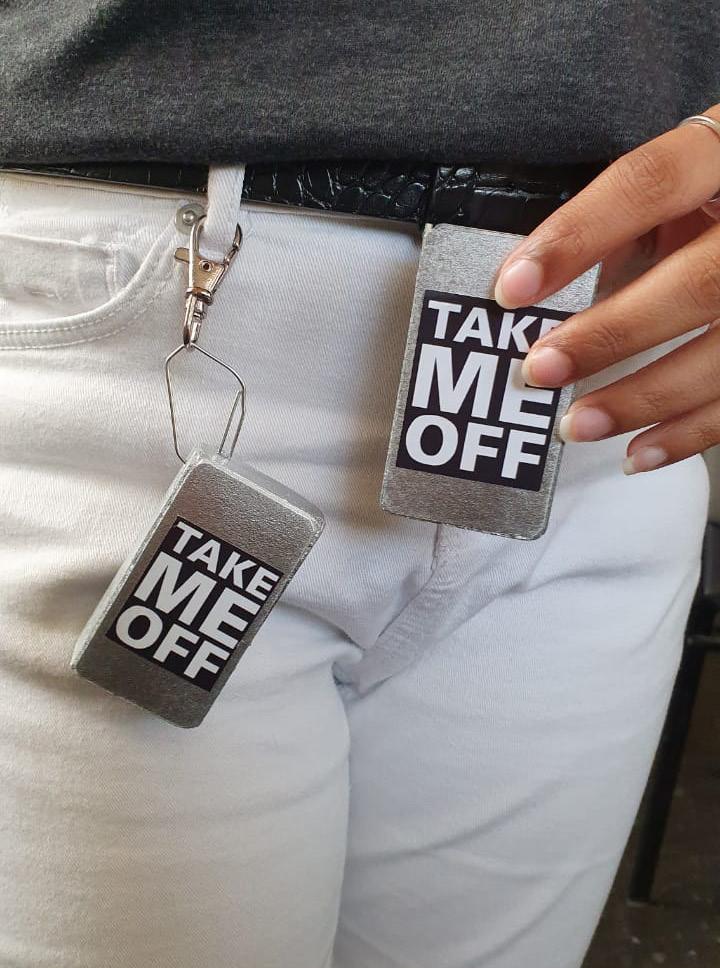
In order for those cards to be convenient to carry around and not lose, the traits of the case they would be sold in were integral. The case that houses the cards is made of light and environmentally-friendly material. It will be made from aluminium because of its recyclable property, i.e., it is 95% recyclable. Being environmentally responsible in day to day choices is not only vital to us, but is becoming more and more vital to our target audience. Attached to the case is a hook, similar to the AirPod case, that makes it easy to loop around a strap or a belt loop. The goal is for the case to be incredibly convenient to handle. The cases come in three basic colors – white, black and red. However, during quarterly events users will have the opportunity to customize their cases however they like. There are 2 parts to the case. The outer box will be the one holding the cards and its dimensions are: 7cm x 4cm x 2cm. The inner box is slight smaller and is of the dimensions: 6.7 cm x 3.7cm x 1.8cm. The smaller box covers the cards and closes the entire case. The size of the case is ideal for people to carry it around everywhere easily as well to hang from their bags. The hook is attached onto the smaller box, which can then be hung from their bag or belt.
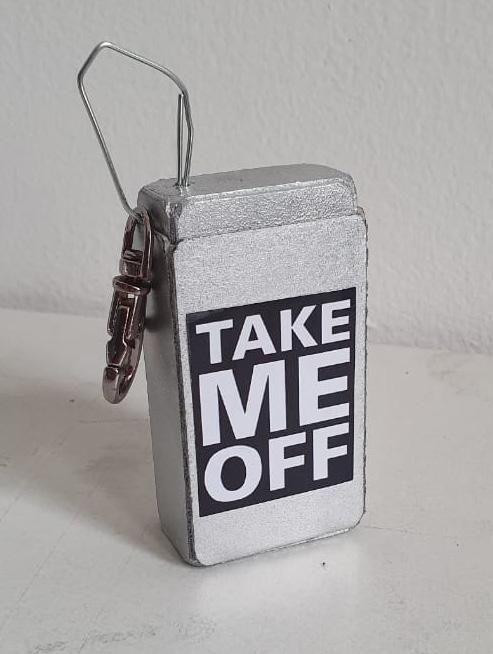







Thirty miniature cards will enclosed in a metal aluminum case of about the same size. Each card holds a digital detox challenge, in three different levels of difficulty – Take Ten (10-minute challenges for people starting slowly or on the go); Take Thirty (30-minute challenges); Take Sixty (Hour-long challenges). Since thirty cards are in each deck, users can choose to do a card a day for a month, or move at a slower or faster pace. This allows them the varying flexibility or adjustment period they might need. The cards would be made of durable material. Four different sets of cards would be available, each focused on a different theme. This is to ensure that a wide range of the demographic is targeted. Among the possibility of themes are video games, design, activities and food. Cards and cases can be bought separately, but people needn’t buy the case twice if they want to buy different sets or themes of the cards. The dimensions for the cards are: 6.5cm x 3.5cm x 0.2cm, in order to fit them inside the case. The front side of the card is a standard design for all the 4 themes, which is black in colour with the “Take Me Off” logo imprinted on it. The back side is different for each theme and has a pattern based on the theme.
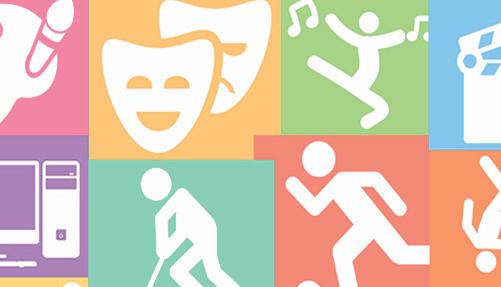

























In order to further the existence and ease a community of people partaking in digital detox using the product, a website is in order. The website would be used in parallel with the product, however, a section of it would be dedicated to forums where people using “Take Me Off” or other forms of digital detox can talk to each other and share tips or experiences. Members of this community could alert one another to various or new ways of engaging with our product and service and have their queries answered by our team or a fellow member.
Every card would have a unique serial number that could be entered on the website and create a password-free profile for individuals to keep track of their scores and challenge completions. The reason for those profiles not being password protected is due to the fact that we don’t want to connect email and social media accounts to the website. That being said, social media would play a vital role in promoting this product and its purpose, as well as further the sense of community we aim for. It’s important to note that it would greatly help the efforts of making the product and its purpose trendy. This way, people are actually encouraged to post about their completed challenges or experience with the product, much like they would have with almost anything else. We even propose the hashtag #DidYouTakeMeOff.
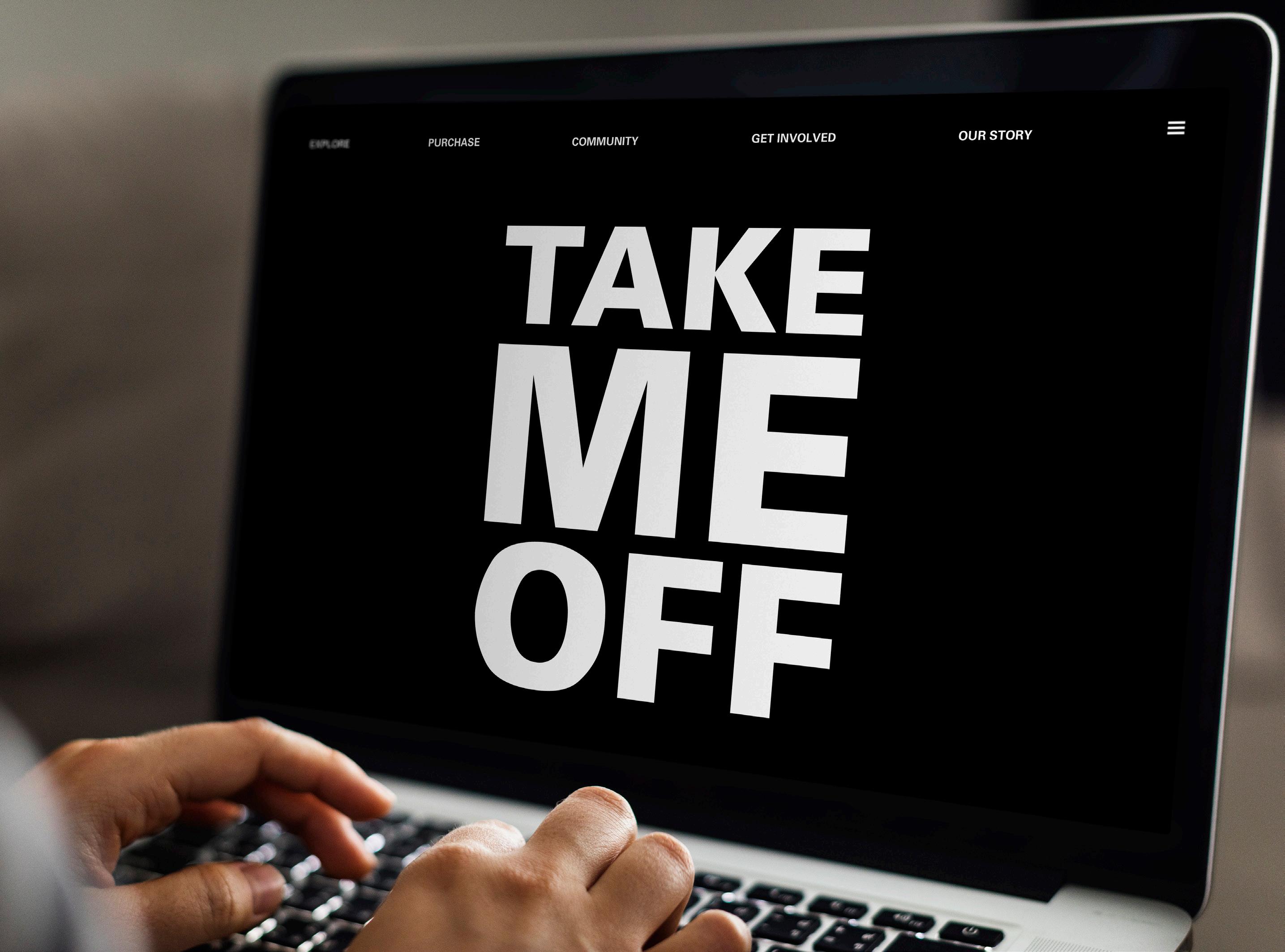
In order to properly promote the use of this product and have it eventually be integrated in people’s lifestyles, we predict it would require the help of two primary categories of partners, namely corporations operating within the industry of each theme as well as influencers that appeal to our demographic. If influencers begin posting and talking about “Take Me Off” and taking part in the digital detox, people are likely to follow suit. Knowing that companies people are loyal to also support the brand and its purpose would drive those customers to it as well. If the notion of digital detox spreads in this manner, the ultimate goal of creating a community is a real possibility. Belonging to such a community would then become attractive to many people.
Our launching event is one designed to not only introduce people to the idea of digital detox through small challenges, but in fact, as them to take part. The main aspect of our launching event will be to set up a giant space, split into four sections. People first begin their journey in the first section, where they will be introduced to Take Ten challenges and asked to complete a number of them to proceed to the second section, where complete a Take Thirty, followed by a Take Sixty in the third section. Upon completion of all three stages, people may enter the fourth section where they will be entitled to a free case and set of cards of their choosing. For those who fail to complete any particular stage or choose not to, they may exit that section and purchase the product if they wish to. Only those who make it to the end will get the product for free. Creating such an interactive event of this scale will show people firsthand how Take Me Off would operate, instead of them being told about it.
With attention spans only becoming smaller and smaller, a lot of the buzz about ideas tends to fizzle out. In order to spread awareness about our brand, we believe that a campaign could drive the launch. The campaign would consist of giving away a certain number of the product for free, and that includes the influencers we want trying out Take Me Off. Pop-up shops could allow people to test-out the product and be informed of how and why it works. Long-term and short-term benefits and value would be introduced to the target audience. For instance, users will have the option to attend workshops about the abundance of benefits one can reap from reducing their reliance on technology – the physical and the mental. In collaboration with the companies contributing to various card themes, giveaways and discounts can become available to consistent users and people who accumulate high scores. Rewards and various activities and newer challenges would be introduced at quarterly events, with the help of our changing partners as companies would be allowed to contribute to the cards and challenges only a number of times. Finally, those events would be the only time people have the chance to customize their cases however they see fit.
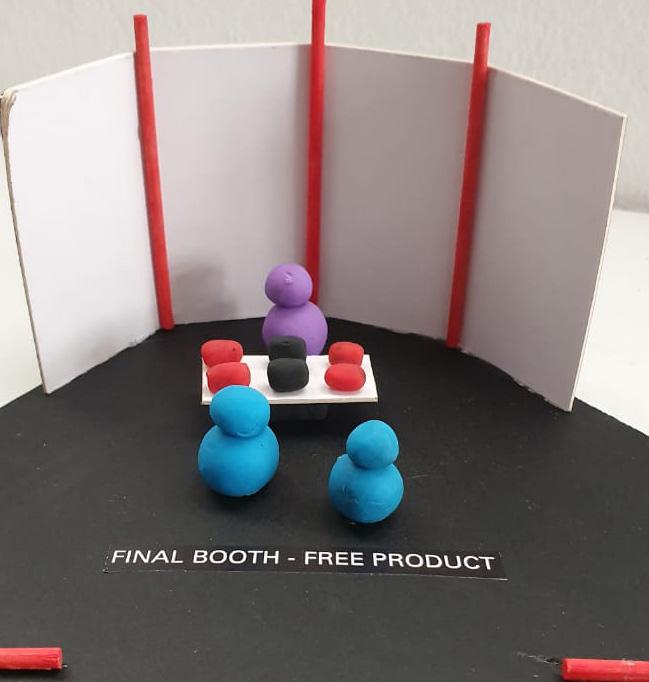
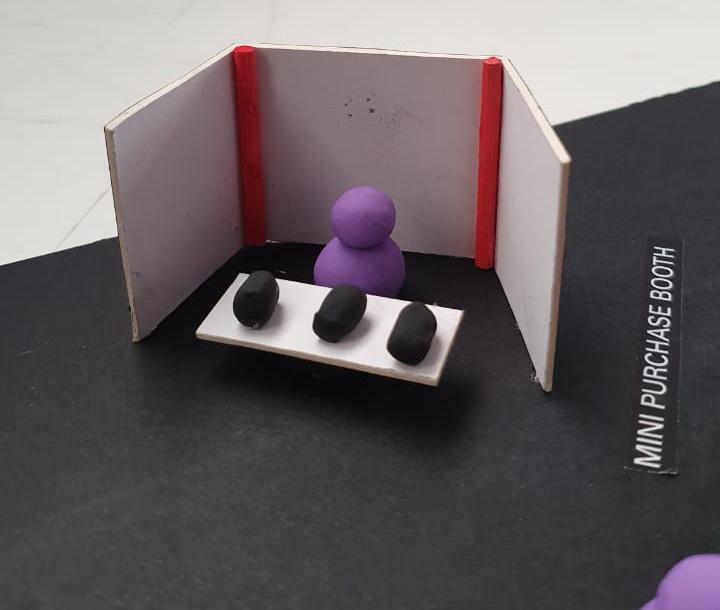


A journey map is a vital tool to humanize a service or product by forcing a business to look at them through the eyes of a user. The reason for mapping out a user’s journey, even before they directly interact with your product or service, is to truly understand what drives them in different directions and why. This tool includes mentioning what a user is thinking, feeling and doing, and help identify areas of improvement or opportunity. This journey map specifically talks about the way the user Basiim Durrah, who is a gamer, interacts with the Take Me Off box from start to finish. From discovering the brand from his favourite YouTuber’s channel, to ordering it online, to opening and interacting with it, and finally, talking about it to his friends and family which leads to a sparked interest in their minds. This map covers the entire journey of a potential user and the way he experiences the product as a first time user. Along with the journey map, the persona of Basiim is also added to give complete context about the user.
Gaming influencer talks about “Take Me Off” on his Youtube channel. want to find out more about this card game. Excited Enthusiastic
Googles “Take Me Off” and discovers the website.
Checks the availability of the box of cards and where to find them.
Where can I find the game to buy it?
Will the product be available in the Virgin Store at Sahara Centre?
Goes to Virgin store and purchases the card from the Pop-up stand. am glad could find the theme want.
Opens the box, reads the instruction manual and goes through the cards.
Begins with the easy 10 minute challenge.
Posts about the challenge completion on the website and tweets about it using the hashtag.












Starts the next level challenge with his friends.
Posts the challenge on website and scores extra points for completing a harder task.
Curious Excited
What exactly is the game and how does it work.
Will be able to tackle the challenge in 10 minutes?
Everyone is hashtagging the game, so maybe should also post it on my instagram feed.
This is a lot more fun playing with my friends.
My points are increasing fast. I should play this more often.
His friends also wish to purchase the box of cards and googles the website. am glad my friends too loved the game. We can have challenge each other too now.
Basiim wishes to purchase other packs as he wants to explore the game. really want to try out the other themes as well now.
Nervous Ambitious
Excited Thrilled Restless
Curious Intrigued
Tensed Stressed Excited
Thrilled Curious
Excited Stressed Fun
Excited Delighted
Happy Proud
Enthustiastic Eager
He learns about the upcoming quaterly event while uploading his score online. should call my friends too and attend the event with them. Keen Curious
A service blueprint is almost like a set of instructions on how a service truly functions. Its importance lies in explaining and understanding what happens at various stages of a service and how long they take. A service blueprint also allows us to properly map the front stage and back stage players necessary to produce the final outcomes expected of the service. This enables us to link customer actions with the touchpoints and interactions that would further them. In the case of our product and service, identifying front stage and back stage players was difficult, as both could be interchangeable. In this blueprint, the pre, during, and, post service stage show how the user discovers the service and product of Take Me Off in a three step phase. The pre-service phase shows the user learning about the service and consciously making a decision to order and consequently interact with the product and service.
During the service phase, the user is mindfully interacting with the tangible aspect of the Take me off service, by using the product and talking about it with his loved ones. During the post-service, the user does a lot more research about the product and looks into monthly events he can participate in.
Discovers “Take Me Off” while watching Youtube. Goes through the website and finds out about the launching event.

Take Me Off
Goes for the lauch of “Take Me Off” and purchases the card from the Pop Up booth.
Unpacks the box of cards and tries the first easy challenge on his own to see whether he can finish it within 10 mintues.
line of interaction
Introduces the cards to his friends and plays the 1 hour long challenge with his friends.
Signs up into the website with the serial number and adds all the points he has acquired so far.
Learns about the monthly pop-up on the website to showcase the challenge completion.
Learns about the quarterly events through the website.
Attends the first of the 4 yearly events and customizes the card box to his personal taste.
IT and other technicalities responsible for the functioning of the website.
Volunteer infront of the Pop up stand, Represents from Partner companies, Marketing team
line of visibility
Take Me Off
Take Me Off
Take Me Off
line of interaction
Volunteers conducting the event, “Take Me Off” representatives, Represents from Partner companies
line of visibility
Event Manager, Sponsors, Helper boys, People responsible with stock-taking.
line of internal interaction
Manufacturers of products, Suppliers of card and all event equipments.
IT and other technicalities responsible for the functioning of the website.
Event Manager, Sponsors, Helper boys, People responsible with stocktaking.
line of internal interaction







IT and other technicalities responsible for the functioning of the website.
IT and other technicalities responsible for the functioning of the website.
Manufacturers of products, Suppliers of card and all event equipments.
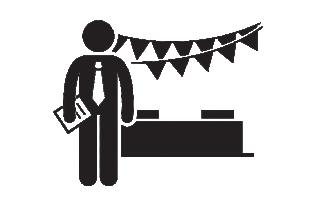
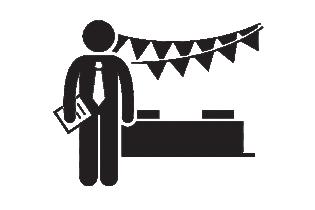
1. Four categories of industries based on themes to target wider audience 2. Partner companies that allow for sustainable and environmentally save and stable product production
3. Influencers in all fields
A business model canvas is a straightforward way of conveying how and where everything is linked from the business side. The relationship among the various aspects of the process can be seen clearly. This model ultimately elaborates on how key partners, key activities and key resources produce value for customers and through what channels. It also includes the cost structure and revenue streams expected to bring it all together. The value propositions are particularly important for our service because those are the factors that differentiate our product and attracts the audience. For example, we want our users to make it a part of their everyday routine which is why the portability factor is very important. For the customer relationships, trendy, transparency and interactiveness are some of the aspects we think will make our service succesful among the people. Moreover, it is crucial that we identify our partners from four different industries since our product is based on 4 different topics.
1. Levels of channels 2. Partners 3. Themes 4. Social Media Buzz 5. Platform to talk and communicate with other usersWebsite and events
Our service and product promote healthy living via a myriad of elements like having better control of day to day activities, belonging to a community of like-minded people and breaking from the staus quo. This is accomplished through a product that is convenient, portable, durable and sustainable, all at once.
1. Mass production for standard boxes 2. The initial purchase of one set of cards with the box, however, the rest of the sets can be purchased seprately at a reduced price without the box to be sustainable 3. Initial cost may be higher but the later costs decrease with lesser material being produced and sold.
Channels
1. Adolescents 2. Young Adults 3. Students 4. Anyone who wishes to reduce their digtial footprint and try to reduce their digital involvement 1. Using environmentally friendly production for our products 2. Distribution through partner brands and channels
Revenue Streams
1. Trendy 2. Transparency 3. Interactive 4. Distracting 1. Digital 2. Influencers 3. Physical 4. Campaign 5. Quarterly events 6. Community 7. Trendy Website 1. Primarily the product 2. Sponsors 3. Events 4. Pop-up shops to increase buzz and sell products
The value proposition includes the customer and businesses side. Value proposition creates value solely based on customer needs. That includes jobs, pains, and gains. The business side includes products and services, gain creators and pain relievers. By providing a link between customers and the business in this way, solutions can be easier to find. Through this canvas, we were able to clearly understand and list all the customer pains like addiction to digital media, lack of time for yourself, lack of having control over digital addiction, lack of human interaction & densensitized people. We realized that understanding the painpoints is as important as understanding the key user needs. Another insight was identifiying what creators the most value for our service for the users, which is reducing the time spend on digital screen by playing the cards with their friends as well as decreased strain on their eyes, neck and the fingers, mainly the thumb.
1.
Reduced strain on the neck, eyes and fingers
1. Reduced screen time
2.


1. Finding a distraction for the use of technology
Reducing the amount of time on using digital devices
Increased interaction with people by spending time on resolving the challenges
desensitization as exposure to informationdecreases
some control over digital usage
Addiction to digital media
Lack of time for yourself
Lack of having control over digital addiction
Lack of human interaction
Densensitized people
Increasing quality time spend with people
1. People are aware that they should lessen their digital usage
2. We offer digital detox in a fun, trendy and interactive way
3. We are trying to build a community wherein being a part of it, affects your day to day activities positively
1. User can touch and feel the product 2. Forces and allows you to interact with your surroundings
A single brand strategy template that helps create a structured, tangible and relevant brand positioning statement, brand essence and brand personality for your business and connect these with your company values and key messaging for your brand. In our product and service development, we used the brand strategy canvas to more clearly understand the ways in which we define and perceive our brand. With the help of the brand positioning statement, we learned how to better express our brand’s purpose and the way in which we can explain it to other users with ease. The canvas helped us understand our competition, which includes mobile applications primarily as our service provides just a website for the users and this is highly unusual in today’s digital age and hence, is a challenge for us. Another factor that is unique to this canvas is addressing the emotional benefits for the users. Our product is aiming to bring a sense of belonging with their surroundings and giving the users a feeling of satifisfaction after completing the tasks along with the other benefits as listed in the canvas.
Our biggest completion are apps since we plan on having merely a website and not a phone application. We are also disrupting the category by starting an almost new category since not a lot exists in this realm.
3. Stress is reduced on body parts that are strained with the use of technology
Take Me Off is a tool for the digitally connected young adults that helps them disengage from technology for short periods of time. It benefits people as it assists in increasing the time spent with oneself and others around because in a digitallt connected world, human interaction is still considered the number one priority. At the end of the day, the user feels happier with the control they’ve gained over their digital use.
Transparency, clear motive, simplicity, easy accessibility, readily available and portable
We’re attempting to create a community striving for gradual digital detox through pocket-friendly challenge cards made trendy by the digital platforms themselves. The biggest and most attractive corporations collaborate on four different themes of 30 challenges. If campaigned right, the Take Me Off (working title, play on words from ‘take me on’) can become the sought-after balance of physical and digital worlds.
1. Sense of belonging
2. Not harming the environment
3. Being more active and less still
4. Socializing with a goal
5. Satisfaction from accomplishing the challenge
Easy, fun, trendy and relevant
Tangible and interactive
The unique aspect of Take me Off is the play of words and the way the product functions. The product has the capability of using the environment around it to function and allow the user to disconnect from their digital devices and also connect with people around them, thus, meeting their goal of connecting better with people around them while disconnecting from their devices for a short amount of time. All of this along with being handy and always accessible and portable to the user.
When dissecting our service idea and really putting it under a microscope, we attempted to predict what could be a problem and hinder our value delivery. One definite problem is that we cannot really know for sure if people are actually doing the challenges or simply pretending to, simply to feel like they belong or at an attempt to collect the rewards from an accumulated point system on a website. Therefore, we decided that we cannot fairly keep a point-system that tracks people’s progress without there being a foolproof way to know that those participants did indeed complete their challenges. Still wanting to have the added incentive of rewards for those dedicated to digital detox, we thought to introduce a monthly popup, smaller in scale but similar to our launching event. This way, people have a chance every month to come and demonstrate their ability to do a series of Take Tens, Take Thirtys, and Take Sixtys in front of our volunteers and employees. Those who finish all three stages will be the ones who can collect a reward at the end, provided by our partner companies and collaborators (for instance, if Starbucks had contributed to the cards with the food theme, they would be offering discounts and vouchers, etc). The logic behind this way of introducing rewards is that most people would have to have been practicing these challenges in order to excel at them during monthly pop-ups. The idea is that perhaps this way we encourage people to truly take autonomy for the rest of the month in their digital detox practices.
We also believe this is the best way to be as fair as possible by keeping the proof of completing challenges received by our very own people. Fostering a sense of competition is not the goal, but if those monthly pop-ups turn into a contest of sorts, we will be implementing the idea that anyone taking part at all, whether at the pop-up or on their own, is beneficial.
Our initial idea for the metal aluminium case which will carry the 30 challenge cards was to create a rectangular box that is portable and easy to use. One of the issues that we noticed was the sharp edges of the box. Since people will be hanging the case around their belts or on their bags or even while trying to flip the case open, it could be dangerous. It can cause serious injuries to the users and this can lead to a huge problem if not taken care of in the beginning. Therefore, we have come up with a quick fix to solve this problem. The ends of the metal cases will be curved in order to avoid any kinds of injury to the user. Curved edges are not just safer, but it gives a better grip while holding the box. Moreover, it gives the product a sleek edge in terms of the appearance. People tend to be more attracted and prefer the curved cases rather than boxy ones.
In order to work our way towards digital detox, our plan was to have a proper access to the Take Me Off wesbite only through laptops and computers and to reduce the use of mobile phone by making the websites glitchy on mobiles. However, we realised that this is not very practical today as everyone don’t have access to laptop all the time. Hence, the website will be completely functional on mobile devices as well in order to reach out to everyone. Morover, social media presence is a great marketing opportunity. Therefore, there will be a Take Me Off page on Instagram, where all the updates regarding the monthly pop ups, quarterly events and other news will be shared with the people. The page will not be active throughout the entire year since the main aim of our solution is to reduce people’s digital addiction and hence, we do not want people to get hooked on to our Instagram feed.

(curved edges)


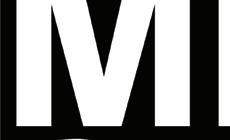
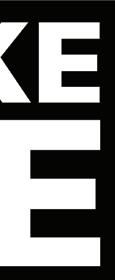
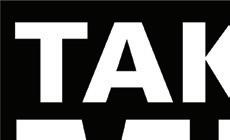




edges)









The red highlights on the journey map and service blueprints show the changes that happens once the “Experiments” and “Quick Wins” are put into practice. In the journey map you can see how the user is using the “takemeoff” instagram page to post his challenge completion. We can also see about how he is keeping a score of his challenge completion and how he discusses about the challenges when he attends the monthly pop-up events, which was discussed under “Experiments”. Similar changes are seen on the service blueprint as well. However, one interesting thing in the blueprint is how 3 stages were added to it because of the monthly popup event, followed by the quarterly events which was a part of the initial blueprint.
thinking
Gaming influencer talks about “Take Me Off” on his Youtube channel. want to find out more about this card game.
Googles “Take Me Off” and discovers the website.
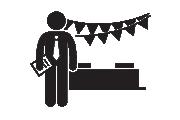


Checks the availability of the box of cards and where to find them.
feeling
text lane emotions doing
Excited Enthusiastic
Where can I find the game to buy it?
Will the product be available in the Virgin Store at Sahara Centre?
Goes to Virgin store and purchases the card from the Pop-up stand. am glad I could find the theme want.
Opens the box, reads the instruction manual and goes through the cards.
Begins with the easy 10 minute challenge.
7 Posts about the challenge completion on instagram with the hashtag and tags “takemeoff” page.
Starts the next level challenge with his friends.
Curious Excited
What exactly is the game and how does it work.
Will I be able to tackle the challenge in 10 minutes?
Everyone is hashtagging the game, so maybe should also post it on my instagram feed.
This is a lot more fun playing with my friends.
9 He keeps a score of how many challenges he has completed so far to show at the event. have completed quite a few challenges. It will be great at the event now.
His friends also wish to purchase the box of cards and googles the website.
Nervous Ambitious
Take
Excited Thrilled Restless
Curious Intrigued
Tensed Stressed Excited
am glad my friends too loved the game. We can have challenge each other too now.
Basiim wishes to purchase other packs as he wants to explore the game. really want to try out the other themes as well now.
Thrilled Curious
Excited Stressed Fun
Excited Delighted
Happy Proud
Enthustiastic Eager
12 He goes to the monthly event to discuss about the completed challenges. should call my friends too and attend the event with them. Keen Curious
Discovers “Take Me Off” while watching Youtube.

Goes through the website and finds out about the launching event.
6
11 12 13
14 15
Goes for the lauch of “Take Me Off” and purchases the card from the Pop Up booth.
Unpacks the box of cards and tries the first easy challenge on his own to see whether he can finish it within 10 mintues.
Take Me Off line of interaction
Introduces the cards to his friends and plays the 1 hour long challenge with his friends.
Uses the hashtag and posts a picture of the challenge completion on his instagram feed to show his friends.
Learns about the monthly pop-up on the website to showcase the challenge completion.
Attends the monthly pop-up event with his friends
Demonstrates the Take Ten, Take Thirty and Take Sixty challenges and gets rewarded for the finishing the challenges.
Learns about the quarterly events through the website.
Attends the first of the 4 yearly events and customizes the card box to his personal taste.
Volunteer infront of the Pop up stand, Represents from Partner companies, Marketing team
line of visibility
Event Manager, Sponsors, Helper boys, People responsible with stock-taking.
line of internal interaction
IT and other technicalities responsible for the functioning of the website.
Manufacturers of products, Suppliers of card and all event equipments.
Technicalities responsible for the functioning of social media.

Take Me Off
Take Me Off
IT and other technicalities responsible for the functioning of the website.
Volunteers conducting the event, “Take Me Off” representatives, Represents from Partner companies
line of interaction line of visibility
Event Manager, Sponsors, Helper boys, People responsible with stock-taking.
Volunteers conducting the event, “Take Me Off” representatives, Represents from Partner companies
Volunteers conducting the event, “Take Me Off” representatives, Represents from Partner companies
Event Manager, Sponsors, Helper boys, People responsible with stock-taking.
Event Manager, Sponsors, Helper boys, People responsible with stocktaking.
line of internal interaction






Suppliers of all event equipments, Suppliers of the sponsored gifts
Suppliers of all event equipments, Suppliers of the sponsored gifts
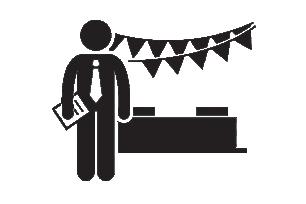



IT and other technicalities responsible for the functioning of the website.
Manufacturers of products, Suppliers of card and all event equipments.
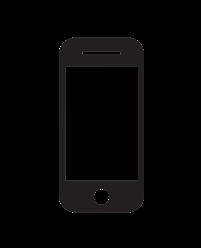
First, we tried to understand the main issues with the use of technology in today’s world. We sought out to do this by interviewing young adults in the age group of 15-25 years. We asked them questions about their digital habits and what they thought was harming and/or helping them. We discovered that many people were aware of what was harming them, however, they did not know how to change their ways of how heavily they rely on technology on a day to day basis. We did additional secondary research which helped us confirm our suspicions and come up with an action plan. But then, we realized that trying to get rid of all technology was neither possible nor a viable option for the result we were hoping to achieve. And so we decided that trying to help people by aiding them in controlling their dependency and reliance on technology was the way to go. We discovered that users were aware of their digital addiction and dependency, but could not find suitable ways to combat and control this issue. We then decided to come with a tangible product along with a service that supported the product that would help the user put away their digital device for a short amount of time. We were surprised to learn how small everyone’s attention span had become. This meant that our product and service needed to work hand in hand with the user’s short attention span and also help the user achieve a short period of digital detox. Coming up with the idea of TAKE ME OFF was surprisingly easy. We tried to focus on topics that were immersive and topics that involved a large demographic. However, coming up with the challenges in each group was difficult. Our hunches about what people expect from us were correct, but, our hunches about what we expect from them were wrong; This meant that asking the user to take three hours off technology was not a viable option and we needed to demand less of our customer base. Finally, we came to a compromise and created the final version of TAKE ME OFF which involved challenges that took up significantly less amount of time to accomplish whilst still providing a feeling of accomplishment to the user. If we had to do it over again, we wouldn’t do it any differently.
1. How many times have you used social media in the past month (can you check)?
2. Run me through the very first things you do when you first wake up?
3. How easily do you get distracted by technology around you while studying for an exam?
4. Do you have any habits to prevent you from excessively using technology?
5. How often do you use your phone/laptop during a lecture for reasons unrelated to the class?
6. What are some reasons people check their phones while they’re driving? How can we stop that?
7. If we asked you to go a full day without spending a long time on your devices, what other activities would you engage in?
8. For how long can you stay without using your digital devices namely, your phone?
9. What are your thoughts on the premise that technology could transcend human interactions?
10. In your opinion, has technology made people less or more social?
11. In less developed countries, many do not have access to the Internet. What kind of differences do you think that makes?
12. Do you think using digital devices can have an impact on your emotional, physical or mental state? If so, how?
13. Do you think such a thing exists as digital addiction, and what are your opinions of it?
14. In your opinion, if a person is addicted to using digital devices, what are some possible effects that can have on that person?
15. What negative impacts or negative consequences could people exert on each other through social media or the digital connectivity that exists?
16. Do you think there is a connection between isolation, loneliness and technology?
17. Do you think technology detachment can further enhance children’s learning and cognitive skills?
18. Do you think by using technology and getting addicted to it can make a person desensitized? If yes, why is that?
19. Are there any observed differences between people’s productivity in the past when technology was not available and people today that have access to the Internet?
20. What are the benefits of using digital detox?
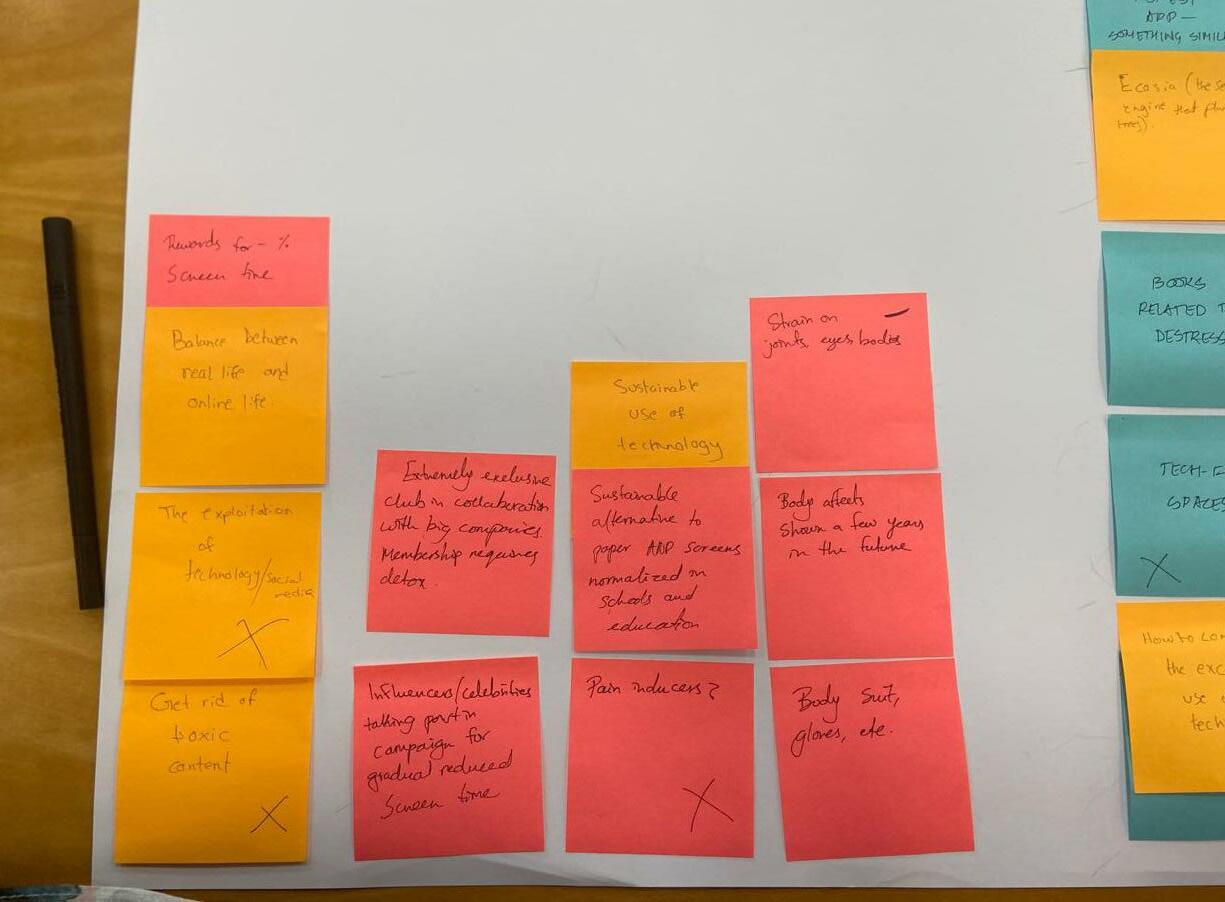



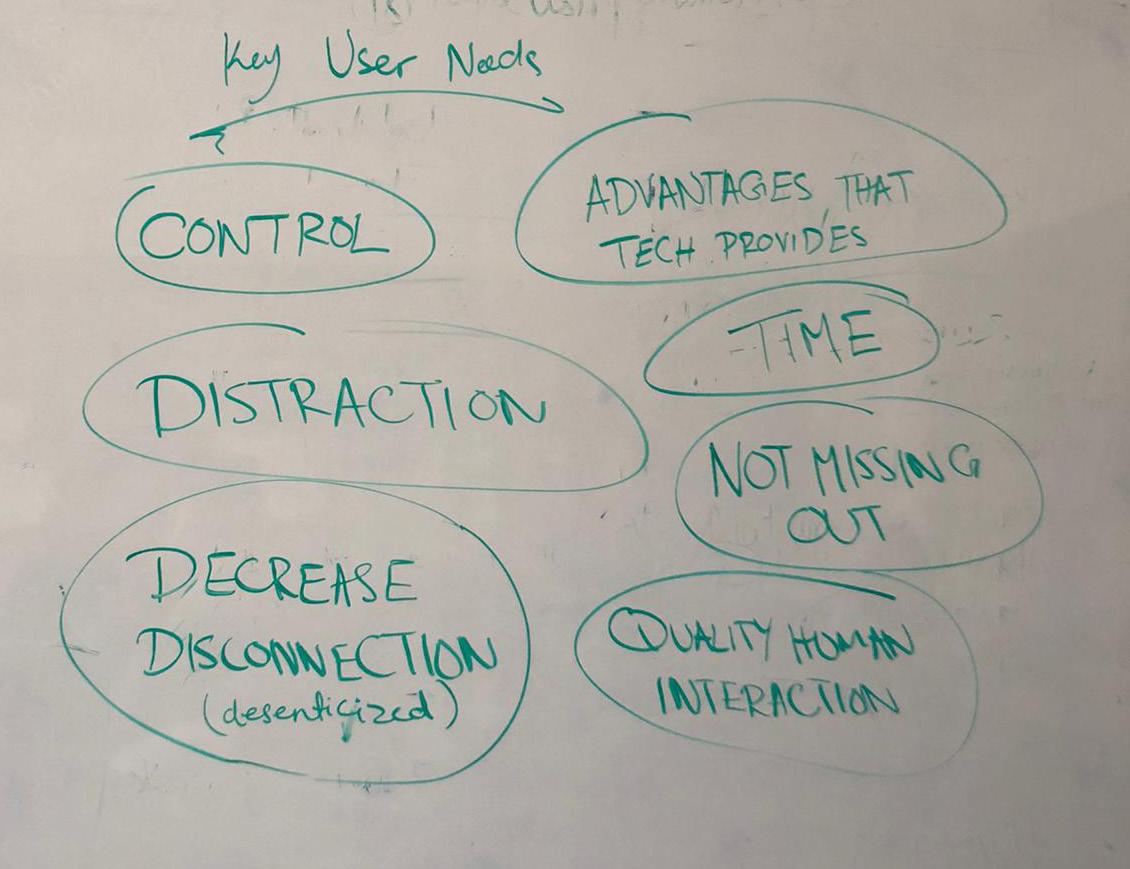

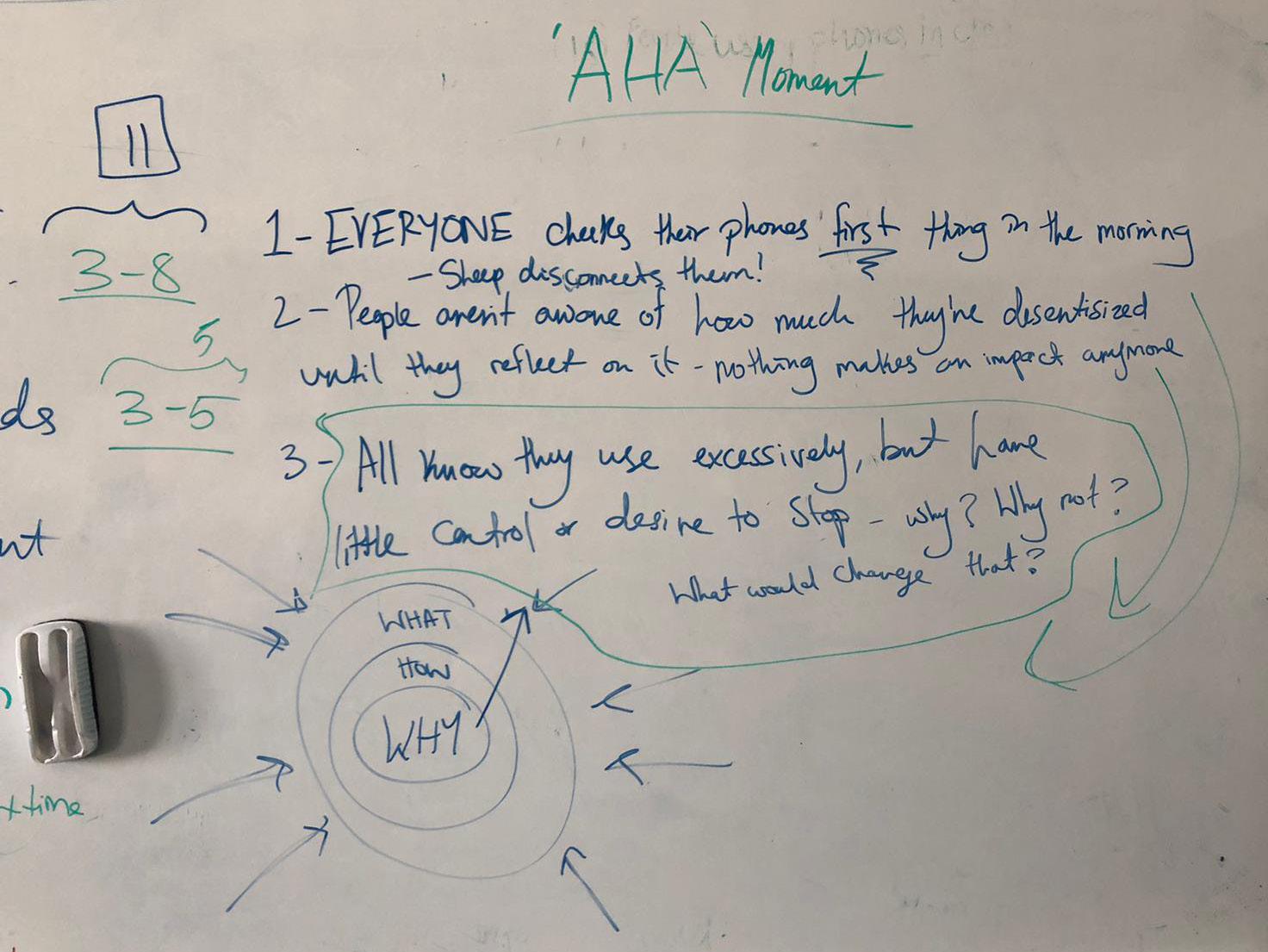

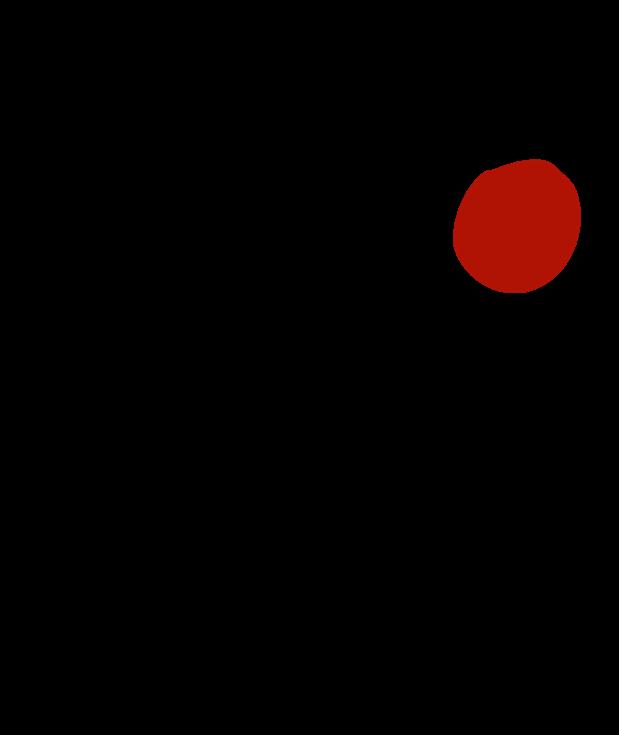
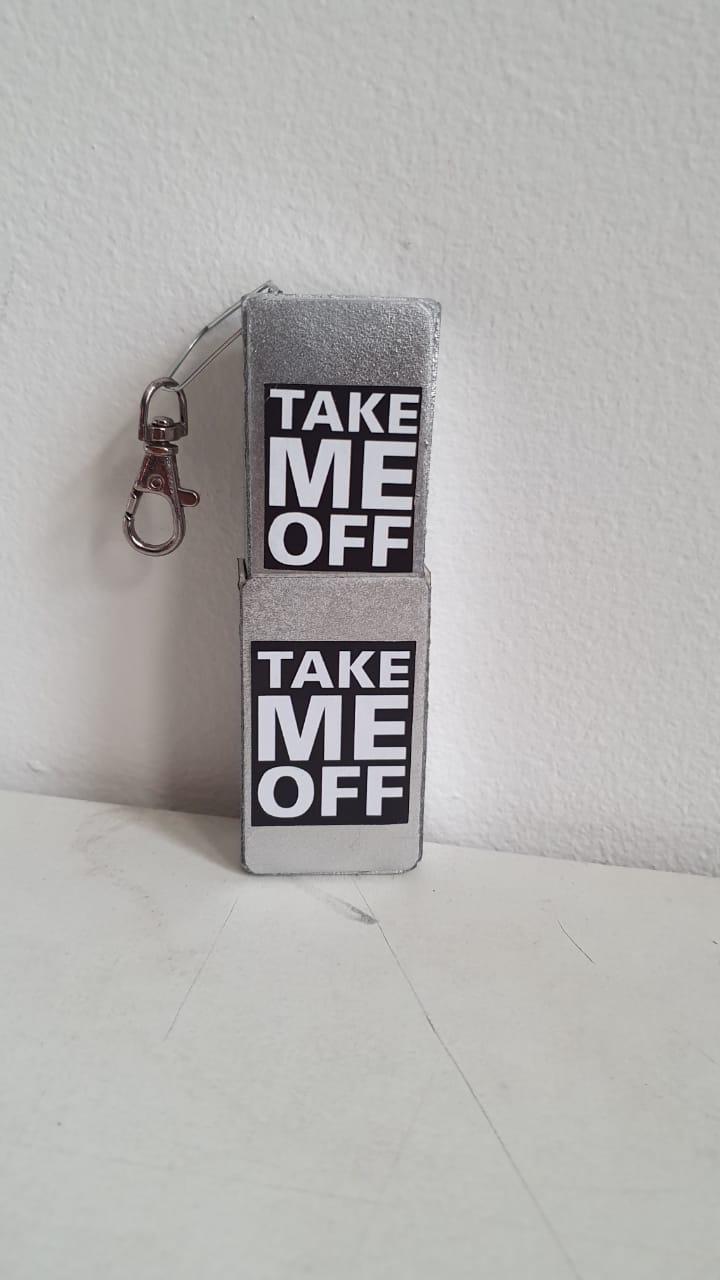


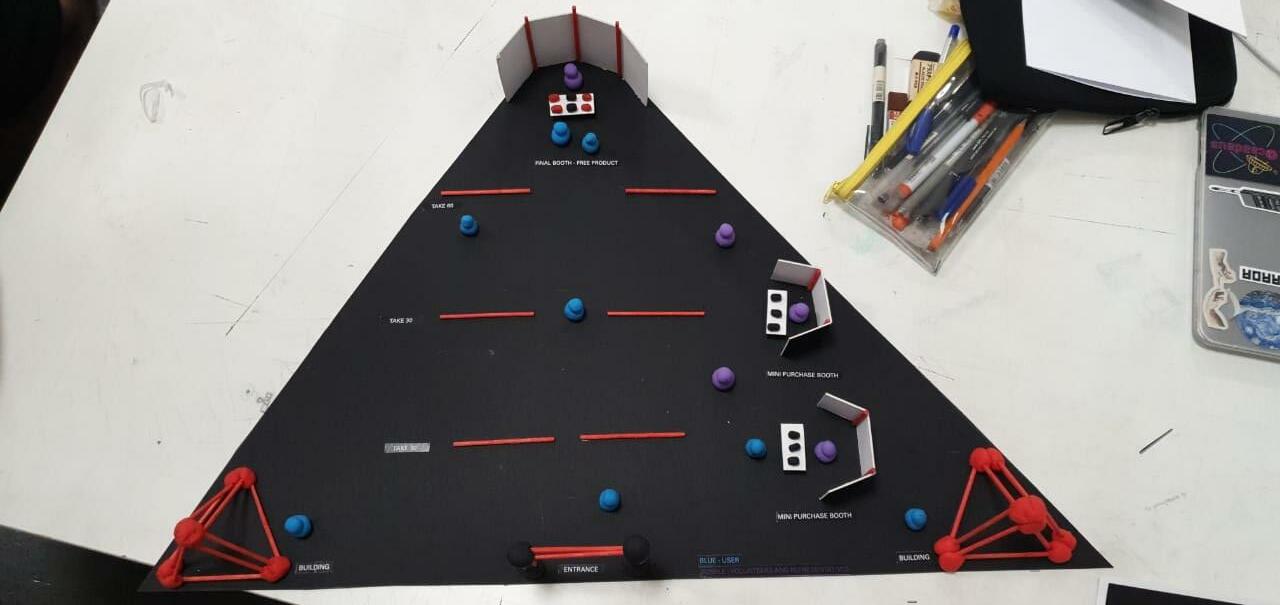
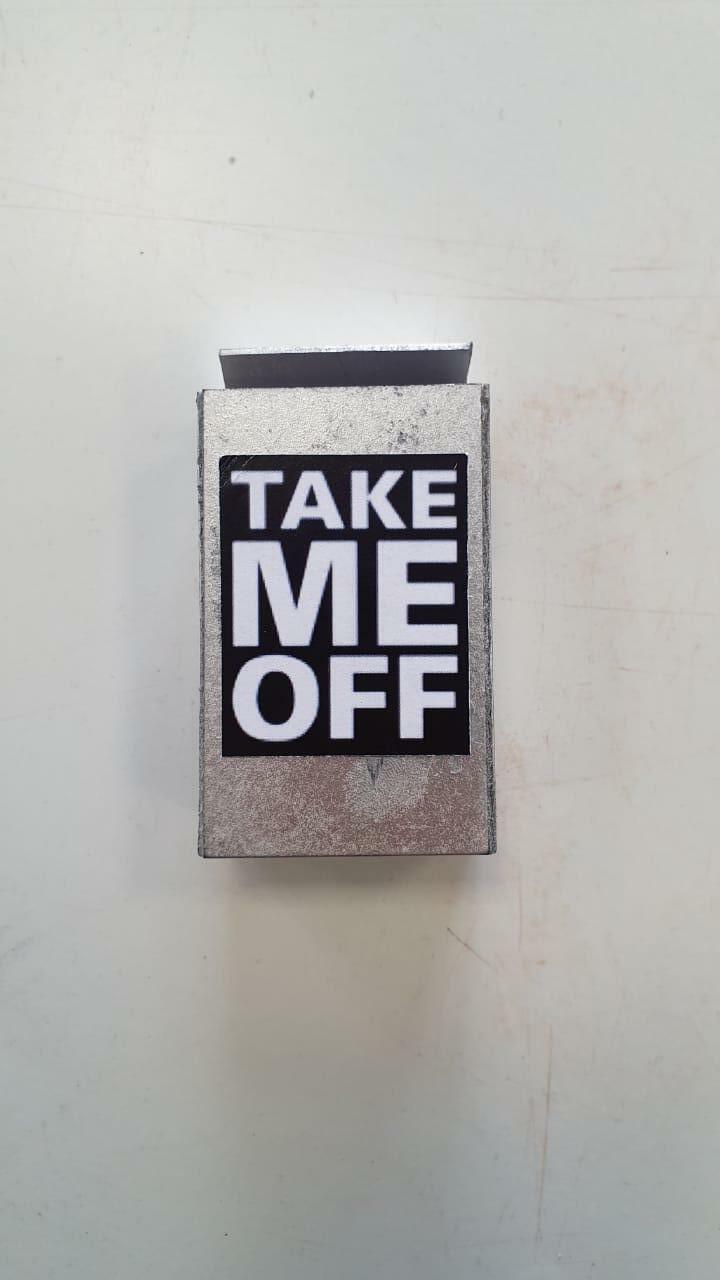
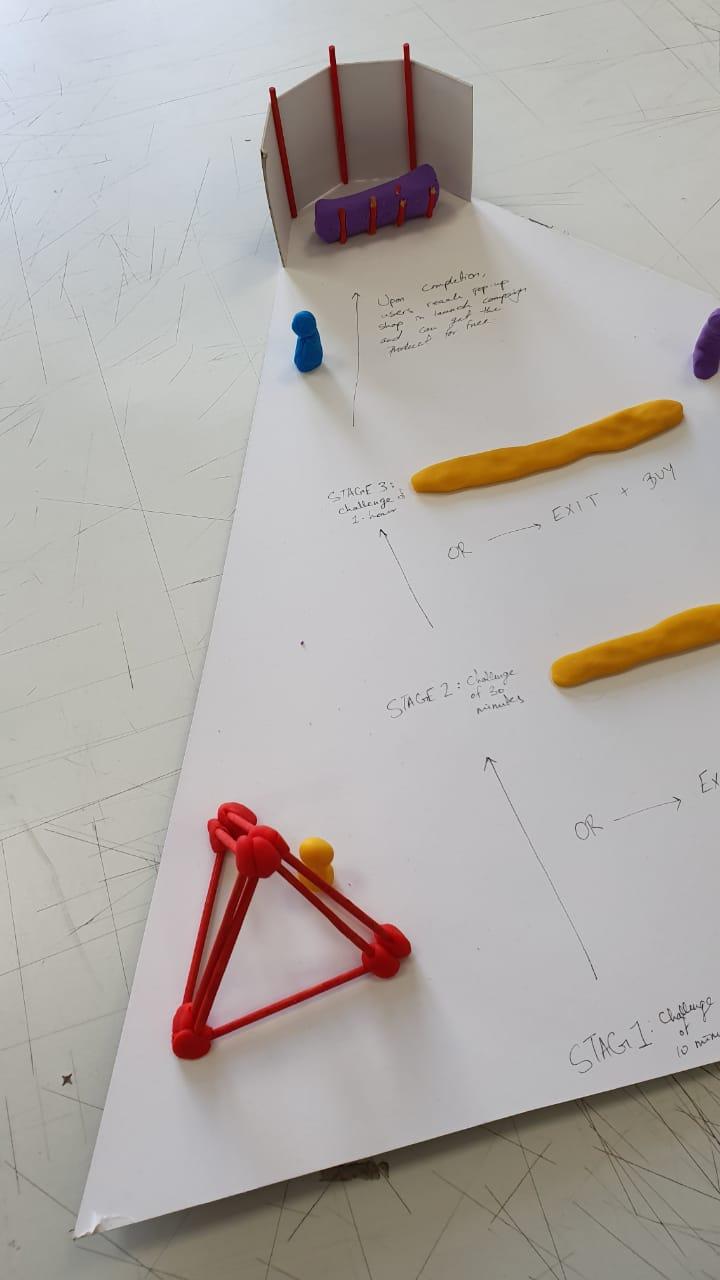
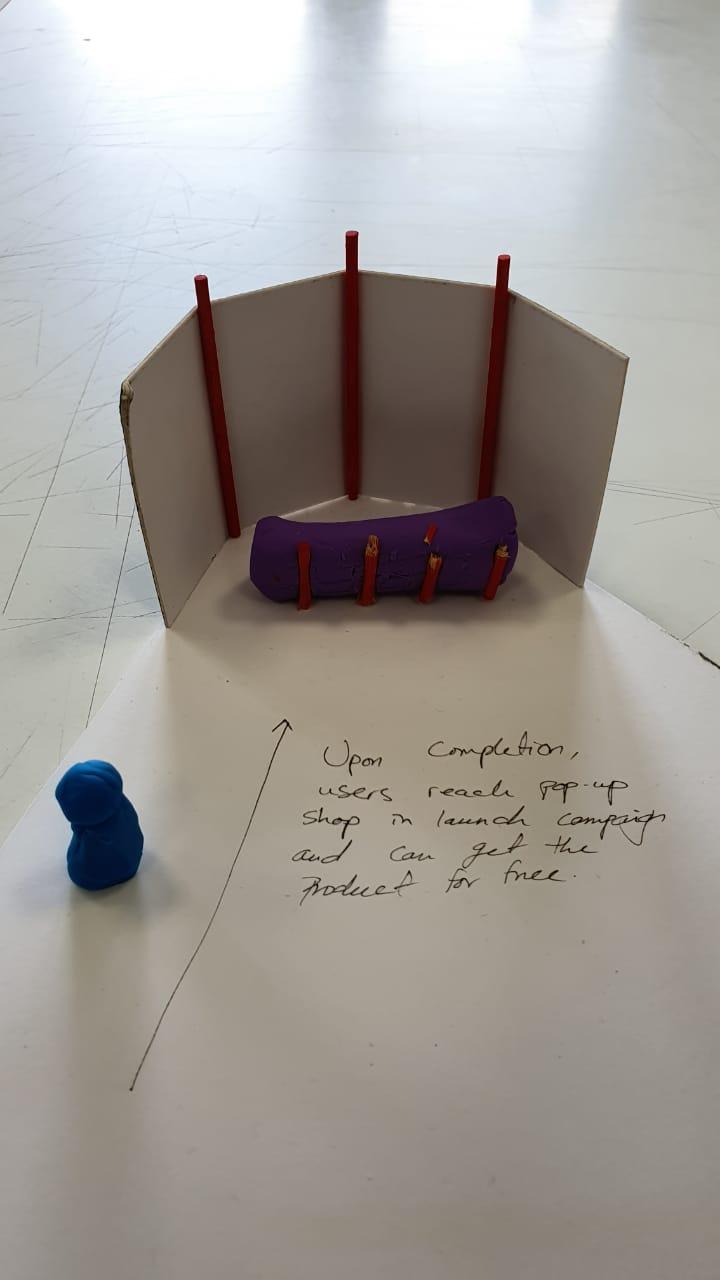

https://brucey.com.au/marketing-tools/brand-strategy
Lee, S., Kim, M. W., Mcdonough, I. M., Mendoza, J. S., & Kim, M. S. (2017, April 17). The Effects of Cell Phone Use and Emotion-regulation Style on College Students› Learning. Retrieved from http://web.b.ebscohost.com/ehost/pdfviewer/pdfviewer?vid=1&sid=b6b6c33b48-9669-bab6562-519c93dbf6e@pdc-v-sessmgr04.
475: Service Design Kiran Sajwani
DES









Aman Sandhu - 71114
Bayan Al Masri - 64138
Heba Jaleel - 68819